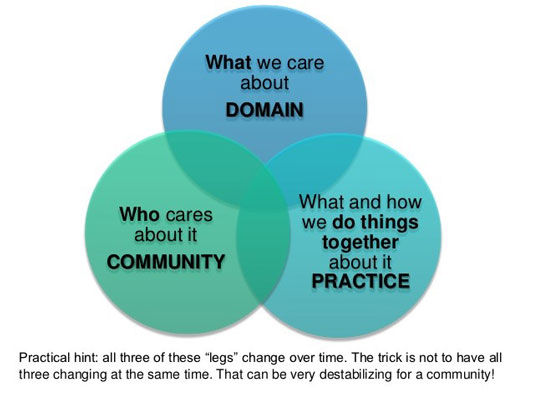Community of Practice Model
Frequently organized informally, a Community of Practice (CoP) is an assembly of individuals who share an interest in a particular area or topic. The origin of the concept and name are credited to anthropologists Jean Lave and Etienne Wenger who suggested adult learning happens best in conversational, informal environments, such as apprenticeships.
By convening and communicating regularly (either in person, via phone, or online) over time around an issue of common interest, CoPs collaboratively exchange knowledge, experiences, and resources with the intention of furthering practice and solving problems.
There are three key elements that differentiate CoPs from other groups of people:
- A shared community to cultivate relationship building (for example, interpersonal relationships are at the root of the platform in which the information sharing occurs)
- A shared domain of interest (for example, all members are committed to the common topic or issue, which gives the CoP an identity)
- A shared practice or experiences around the area of interest (for example, all members are in some fashion practitioners of the domain, giving them experience from which to draw and contribute to the community)

Examples of networks operating under the CoP model include: HealthPartners Institute's Community of Practice.
Resources to Learn More
Community of Practice Design
Guide
Document
Step-by-step structure to the most important design elements that go into defining, designing, launching, and
growing both online and in-person CoPs. This guidebook was developed from an educational perspective, but the
concepts can be readily applied to health.
Organization(s): Educause
